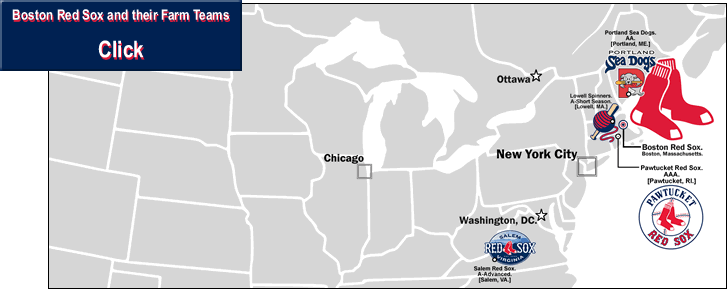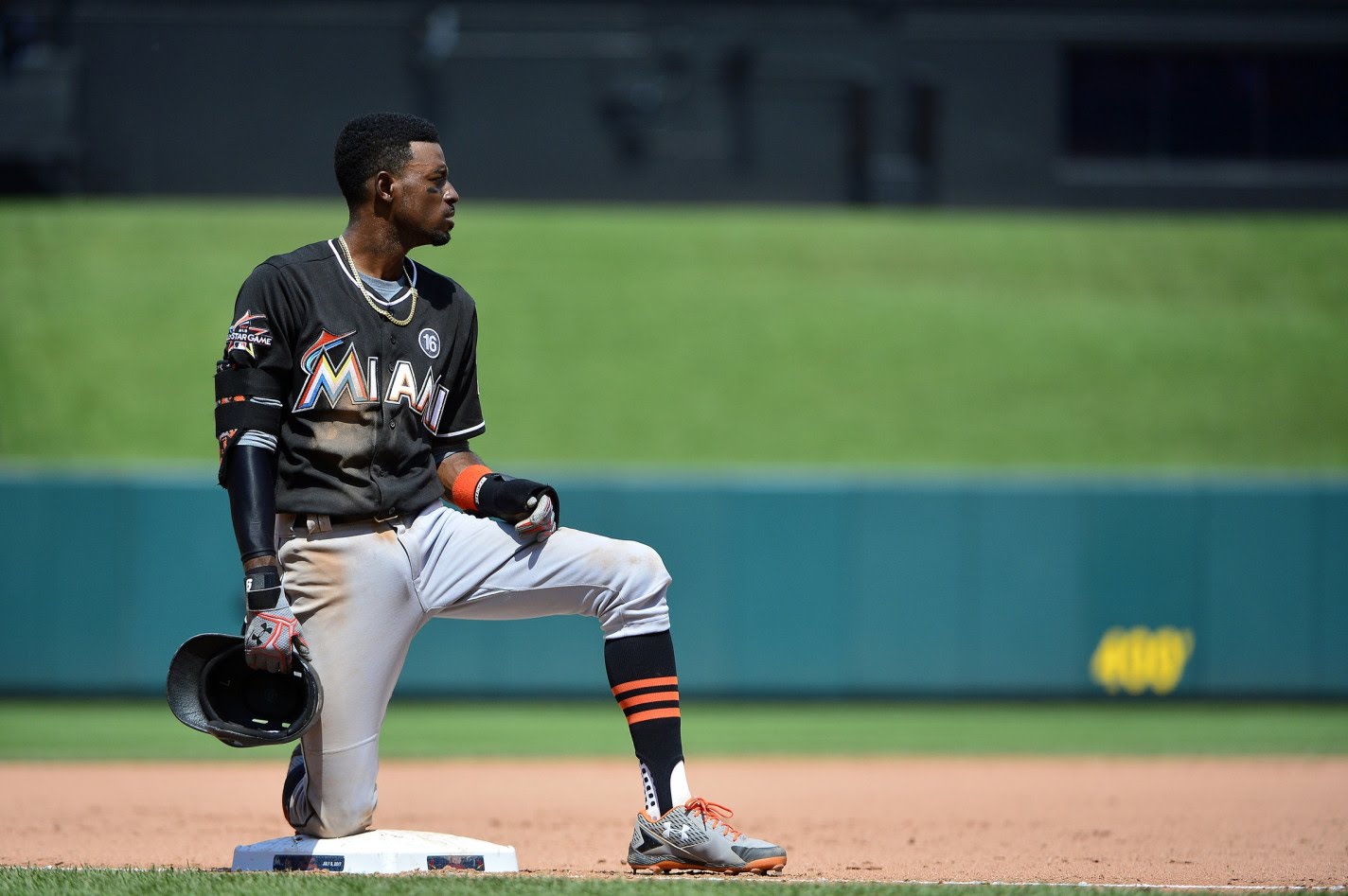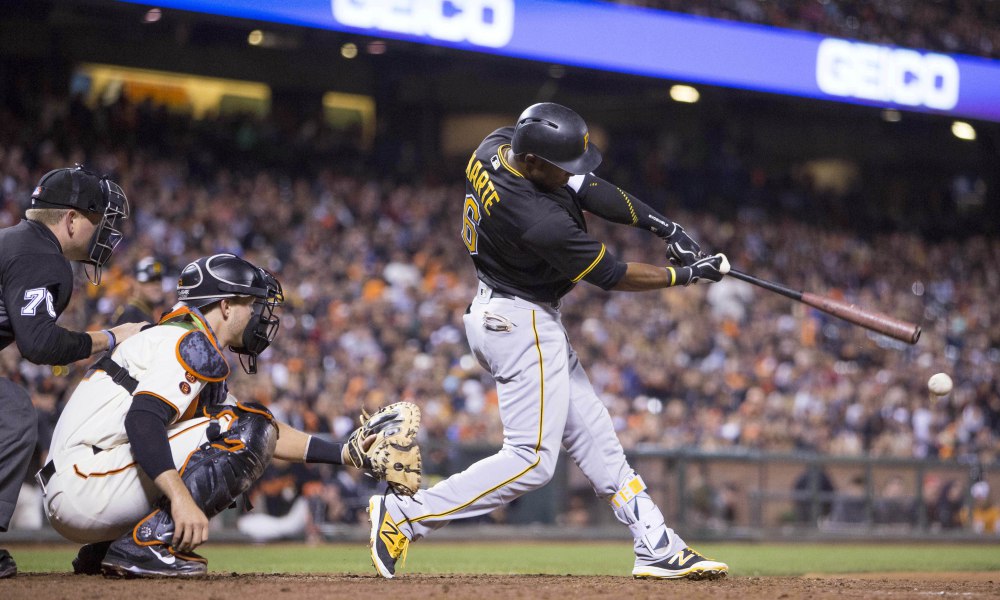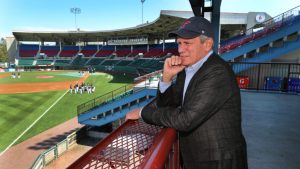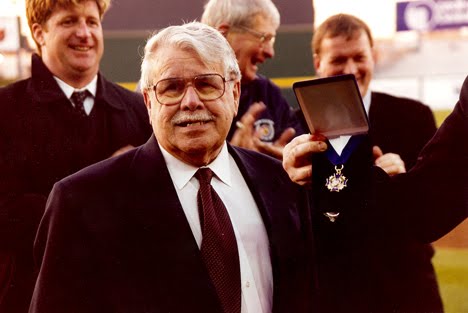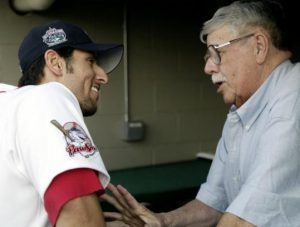The future of the Red Sox appears to be in good hands with a collection of raw, high potential prospects in the minors. In light of the recent success from young players like Rafael Devers and Michael Chavis, here we look at the very best the Red Sox have left to offer in the minors.
1. Triston Casas
Age:19
Position: 1B/3B
Height: 6′ 4″
Weight: 240 lb.
Bat/Throw: L/R
While he is a bit far away from joining the big leagues, Casas has the potential to be a future All-Star regular for the Sox. This is clearly shown in the fact that he is currently ranked #90 on MLB top 100 prospects, and #4 on top 10 first basemen. He has won the U18 World Cup MVP honors, and the World Baseball Softball Confederation player of the year award in 2017. His greatest strength is his power, as he lead the U.S. U18 national team in homers and RBIs in both 2016 and 2017. He also has 17 homers in under 100 games in 2019, fueled by his size.
He also is a perfect man for the corners of the diamond, as his 90 mph pitching arm from his amateur days makes for a supreme defensive weapon. Combine that with his soft hands and strong conditioning, and he can be one of the best defenders on the field. His only clear downside to his game is his speed, but that isn’t enough to stop someone of his caliber from taking the league by storm.
2. Bryan Mata
Age: 20
Position: SP(righty)
Height: 6′ 3″
Weight: 160 lb.(listed, but he appears to be bigger now)
Bat/Throw: R/R
He has improved greatly since joining the Sox in 2016, and could get called up in the next year. With that being said, there are definitely a few issues to iron out. As he gets tired later in games, his release point can change and he overthrows pitches. This causes there to be an increased number of baserunners late in games. Usually, though, he tends to settle down and pitch himself out of those jams. He throws two types of fastballs, a four-seam at 94-96 mph, and two-seam at 91-93 mph. His four-seam can cap out at 98 mph, yet he is still improving it and needs to work on its command and control.
He also has recently added a 88 mph power slider, which is great at fooling batters, and can even occasionally morph into a cutter. His changeup ain’t to bad either. It averages 85 mph and fades at near perfect times. He could be a great mid to late rotation pitcher, or could even move to the bullpen. What is certain is that he is hardworking and in a position for success.
3. Bobby Dalbec
Age: 24
Position: 3B/1B
Height: 6′ 4″
Weight: 230 lb.
Bat/Throw: R/R
Another prospect who could be called up soon, Bobby Dalbec is ranked #8 on MLB’s Top 10 3B prospects, and for good reason. A player compared to that of Kris Bryant, Dalbec could be an everyday impact player for the Red Sox. He is a very similar prospect to Casas. They both aren’t the fastest players in the world, yet they have power and defensive prowess. In 2018,he displayed his power as he ranked second in extra-base hits (70) while also being fourth in homers (32). This year he has a solid 20 homers in under 100 games, and was called up to Pawtucket.
Also, like Casas, he has a powerful arm stemming from a prior pitching career. While a little stiff when fielding, he can potentially be a great fielder at third base. He shows some swing and miss concerns, which could prevent a call up until late next season. He overall looks like a solid prospect, and a player to keep on your radar for the future.
4. Jarren Duran
Age: 22
Position: OF
Height: 6′ 2″
Weight: 200 lb.
Bat/Throw: L/R
Duran is a player with a game comparable to an outfield version of Pedroia. Hitting wise, Duran utilizes a toe tap timing device with simple swing mechanics. He is aggressive and will attack early in the count, but can recognize spin and will take a walk. Looks to put the ball in play with hard line drives in all directions. Still improving his already good technique. He also may be the fastest prospect in the Sox organization. While he needs to refine basestealing instincts and reads on defense, he has the type of speed that puts immense pressure on the defense. He is so fast that on occasion defenses have not been able to throw him out on routine grounders. In 2019 he converted to center field from right field, where his previously spoken of speed grants him insane range. He has the clear athleticism teams covet for center field to go along with his speed.
He is not that strong of a player, which really shows in his hitting power and arm strength throwing the ball. Luckily that is not too hard of a fix ,as I expect that as he gains weight the strength will come as well. Keep an eye on this man as he could be an eventual improvement for Jackie Bradley Jr.,if JBJ doesn’t figure out his hitting.
5. Darwinzon Hernandez
Age: 22
Position: RP/SP
Height: 6′ 2″
Weight: 245 lb.
Bat/Throw: L/L
Damn this kid already looks like a stud for the Sox. And yes, he counts as a prospect despite the fact he is called up. Hernandez has impressed as arguably the best reliever option for the Red Sox this season, boasting a 2.03 ERA and 26 SO in 11 games this season. While he does walk a decent amount, it is a fare trade for not allowing a single homer yet. Control could be better, but his amazing mechanics should start to help once he gains more experience in the majors. His best pitch is easily his fastball, which maxes out at 97 mph. His fastball shows natural cut, with late life which jumps on hitters, especially left-handers. The pitch has shown the ability to overwhelm hitters, despite his control problems.
Hernandez’s curveball shows potential to be almost as great as his fastball. At its best it really snaps it off, showing depth and tight rotation. Unfortunately it is a bit inconsistent, and rolls slower at lower velocities when its at its worse. His 83-87 mph slider is also a treat. It can sometimes move like a cutter, and will flash a tight rotation and late bite. Sometimes it will also get loose when he doesn’t finish the pitch, which is a problem that could be be solved through simple practice. It doesn’t take a genius to see how good he could be, and how good he is already. Lets just hope Cora keeps giving him a chance through thick and thin, and not just toss Hernandez back to the minors like he did to Bobby Poyner.
Special mention to prospects Jay Groome(SP), Tanner Houck(SP/RP), and Thad Ward(SP), who didn’t crack this list.
Featured image via Bill’s Sports Maps
